I'm trying to mod a NERF gun to add LEDs onto it, and I'm trying to wire them in parallel. Unfortunately, when I try to wire them, it doesn't work. I have it wired like this:

The only issue I could possibly see is that I soldered the two wires together and then connected the LEDs to them, but I figured that that shouldn't be an issue because I figured that's how parallel works. The first LED lights up fine, but the second doesn't, and I'm not sure what I'm doing wrong. I was wondering if it was because I was doing it with 4.5 volts, I was going to add some resistors later but I just wanted it working first. Any help would be appreciated.